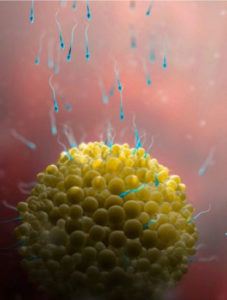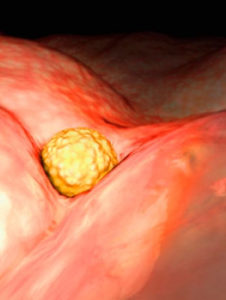First Trimester
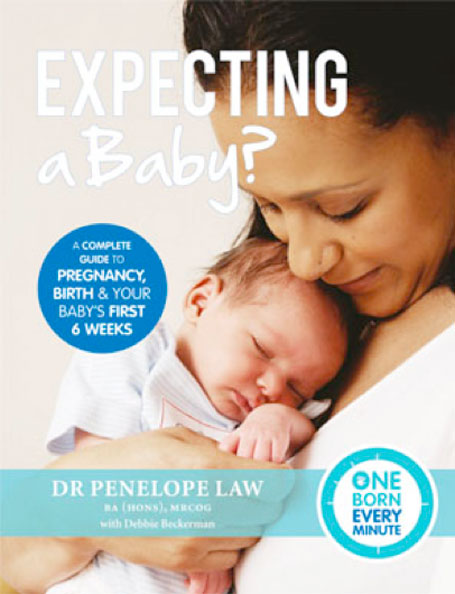
The first trimester begins on the first day of your last menstrual period and is considered to finish at the end of the thirteenth week. It is a crucial time in your pregnancy, during which the baby’s major organs are formed and external physical features develop.
Your body also undergoes an extraordinary amount of changes, most of which you will not be aware of. Despite this, by the end of Week 13, you probably still do not look pregnant, and the only change that might be noticeable to others is that your breasts have become larger. Initially, your pregnancy is supported by hormones alone until the placenta takes over towards the end of the trimester.
Weeks 1-3
Your Baby
Your baby starts to develop as soon as the egg is fertilised by the sperm (see picture), that is, in Week 3 of your pregnancy (see below).
On its journey towards the uterus, the egg (blastocyst) has been rapidly dividing into more and more cells, which become specialised: the outer, trophoblast cells develop into the placenta, while the inner cells are already programmed to form three different layers, the ‘germ’ layers, which will grow into the various parts of your baby:
- the outer layer, or ectoderm, which will become the skin, hair, nails, the nervous system and the brain
- the middle layer, or mesoderm, which develops into the heart, the blood vessels, the skeleton and cartilage
- the inner layer, or endoderm, which will form the digestive
and respiratory systems, including the bladder and lining
of the bowels.
Six days after fertilisation, the blastocyst attaches itself to the endometrium (lining of the uterus). This is called implantation.
While the outer (trophoblast) part embeds further into thelining, the inner cells continue to multiply and form what is now an embryo. By the end of the first week after fertilisation, cells that will become the brain and the central nervous system are already starting to develop.
You
The gestation (length) of your pregnancy is calculated fromthe first day of your last menstrual period, so for the first two weeks, you are not actually pregnant. However, your body is preparing for ovulation as part of your normal monthly cycle.
If an egg is fertilised, on or around Day 14 of your cycle, the levels of pregnancy hormones – notably oestrogen, progesterone and beta human chorionic gonadotrophin (BhCG) – are raised.
Even before your period is due and you know you are pregnant, these (and other) hormones are already at work, maintaining the pregnancy until the placenta is sufficiently developed and can take over towards the end of this trimester. See below for more on the roles these hormones play in your pregnancy.
It is not uncommon to experience a small amount of bleeding at this time, caused by implantation.
It is much lighter than your normal menstrual bleeding, however, and happens a little earlier than your period would have arrived.
Week 4
You
You are already four weeks pregnant by the time your period would have been due. Other than a missed period, most women do not necessarily have any symptoms of pregnancy at this early stage. Some say, however, that they feel different – this may be a feeling of calmness, fullness or some other, indefinable, sensation – or that they simply ‘know’ that they are pregnant.
If you have become pregnant following assisted conception, the date that you had your embryo transfer (whether frozen or otherwise) is counted as Day 14 of your pregnancy, and all your pregnancy dates thereafter will be calculated on that basis.
The Role of Pregnancy Hormones
There are three main pregnancy hormones: oestrogen, progesterone and beta human chorionic gonadotrophin (BhCG), each of which has a specific function in maintaining your pregnancy.
The higher oestrogen levels that occur in pregnancy help to thicken the endometrium, ensuring that the developing embryo remains safely embedded and able to obtain all the nutrients it needs to continue to grow. Oestrogen also stimulates the growth of milk glands in your breasts, which usually causes them to feel tender in these early weeks (see p.126). This tenderness should disappear by the start of the second trimester.
BhCG is a hormone that occurs almost exclusively during pregnancy. It is secreted by the cells of the implanting egg and later, at a lower level, by the placenta. Like oestrogen, it also helps to keep the embryo embedded in the endometrium. Secretion of the hormone rises sharply in the first few weeks of pregnancy and peaks at around Weeks 8–10.
BhCG also stimulates the thyroid gland to produce a hormone, thyroxine, which speeds up your metabolism by 10–25 per cent during pregnancy. This rise in metabolic rate is needed because many of your organs increase in size during pregnancy and they need more oxygen to function well. In order to meet this need, the volume of plasma (the watery fluid) in your blood increases rapidly. The volume of oxygen-carrying red blood cells also starts to rise during the first trimester, albeit more slowly, and this ensures that the blood does not become too watery. In fact, your overall blood volume increases, from around 3.5 litres at the start of your pregnancy to around 5.4 litres by the end.
Progesterone plays a vital role in regulating these metabolic changes. In order to accommodate the increased blood volume, higher levels of progesterone encourage blood vessels to dilate, which prevents your blood pressure from reaching dangerous levels. Progesterone also thickens the cervical mucus so that a protective plug is formed, which stops any bacteria entering the womb during pregnancy and causing an infection.
Weeks 5-7
Your Baby
Week 5: The embryo is just visible on an ultrasound scan, although it will only look like a small blob of tissue. A thin layer of translucent skin covers the embryo and, inside, the primitive heart starts to form. Although it is just a basic tube-like structure at this stage, blood already circulates through it. The spinal cord is in position and is identifiable as a row of dark cells running down the back of the embryo. Gradually, these cells fold in on themselves lengthwise and become the neural tube. At the top of this row of cells are two large lobes. These are the brain, which is proportionately much larger than the rest of the developing embryo. The early digestive system is also in place as a tube running from the top (and what will become the mouth) to the tail. Eventually, the stomach, liver and other digestive organs will evolve from this tube.
Week 6: The embryo changes shape significantly in this week, becoming a tiny comma shape that resembles a slightly strange-looking prawn (see illustration). The head, which is bent over the middle section, has a bulge from which the nasal
region and oral cavity will develop. It also has gill-like folds that will become the face and jaw. The heart, which is now starting to divide into four chambers, bulges from the middle section of the embryo and tiny bud-like protuberances are emerging to become the limbs. Finally, the embryo ends in a tail.
The embryo has doubled in size and now measures 5 mm and weighs 1 g. An ultrasound scan done transvaginally at the end of this week of pregnancy would show the fetal pole – this is the term used to refer to the first signs of an embryo inside the amniotic sac. The fluttering heartbeat may also be visible, although the absence of the latter and/or a fetal pole may indicate that the date of fertilisation is not accurate and not necessarily that there is a problem with the pregnancy.
Week 7: Between Weeks 7 and 10 of pregnancy, the embryo grows so quickly that it will quadruple in size and start to look more like a human being. From weeks 6–8, the bowel grows faster than the abdominal cavity, so it initially develops outside the body. The limb buds develop paddle-type hands and feet. The brain grows faster than any other part and, consequently, the head is still out of proportion to the rest of the body. The neck and a high forehead start to develop, while primitive bones form the beginnings of facial features such as the nose, eyes, ears and jaw.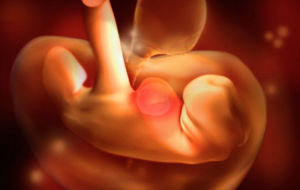
You
Week 5: If the initial pregnancy test you took was negative, yet your period still has not arrived, try testing again, as more of the pregnancy hormone BhCG that gives you a positive result may now be present. Even this early on, you need to take some simple steps in your lifestyle to make sure you don’t put your pregnancy at risk.
Week 6: Extra blood supply is required by almost every part of your body; the volume directed to the uterus doubles, much of which is needed to form new blood vessels in the developing placenta. When you are not pregnant, your uterus is approximately 8 cm long, but during pregnancy it will expand so much that, by the end, it will be up to 1,000 times larger in volume and will have increased twenty-fold in weight from about 50 g to 1,000 g. This change starts to happen quickly, so that by now, four weeks after fertilisation, your uterus is already the size of a tennis ball. However, because it is still contained within the pelvic bones, the increase in size is not visible and only a doctor examining you internally would be able to feel the change. The increase in blood to your vulva, vagina and cervix means that these organs have developed a bluish-purple colouration
that is unique to pregnancy. In fact, in the days before pregnancy tests were available, this was one of the main methods that doctors used to confirm a pregnancy.
Week 7: If you haven’t already made an appointment to see your GP, do so now, so that they can make sure that you are starting your pregnancy in the best possible way. They can also arrange your an appointment with a midwife,
who will start to plan your antenatal care.
Weeks 8-10
Your Baby
Week 8: The face is starting to develop and ten tooth buds are present in each jaw. Elbows and shoulders have formed, such is the speed at which the arms develop. The arms are bent at the elbow, wrists are identifiable and the hands are starting to develop basic finger structures. The lower limb buds grow at a slower speed. The embryo measures 16 mm and is already 10,000 times larger than the fertilised cell from which it originated.
Week 9: This week sees further neurological changes: the brain is four times the size it was at Week 6, the brain and the spinal cord are now differentiated, and nerve cells are multiplying fast. Eyelids are beginning to form, the tip of the nose is distinct and primitive toes are visible in the feet. The trunk is elongating and straightening, with the length from crown to rump now measuring 23 mm. The primitive tube that was the heart at Week 6 has now completed its division into four chambers; two of these, the atria, receive blood, while the other two, the ventricles, pump blood to the lungs and round the body. Valves have developed between the atria and ventricles to ensure blood flow occurs in one direction only. The heart beats at 160 beats per minute, approximately twice as fast as a normal adult heart.
Week 10: By the end of this week all the major organ formation has taken place, which means that the embryonic phase is complete and your baby is now known as a fetus. These early weeks are critical: this is when the developing baby could be affected by the teratogenic (harmful) effects of certain drugs, viruses or environmental factors. 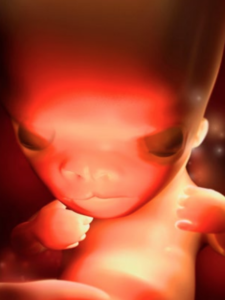
You
Week 8: Most women will have already started to experience a range of pregnancy symptoms, including breast tenderness, abdominal aches and pains, morning sickness and tiredness. However, if you have not, this is not a cause for concern. In all likelihood your pregnancy is developing normally – you are just one of the lucky few! You may also find that you are more susceptible to mood swings.
Week 9: You will probably have noticed that your breasts have increased in size, seem heavier and still feel tender to the touch. The nipples and the darker skin surrounding them (the areola) have darkened in colour. The areola has also enlarged and the sweat glands around the nipple, which resemble little pimples and are called Montgomery’s tubercles, become more prominent and may have started to secrete a clear fluid. This is all due to oestrogen, progesterone and a hormone called human placental lactogen, which are causing the milk ducts
to grow in preparation for breastfeeding.
Week 10: The uterine muscles are thickening and, although you still will not be able to see it, your uterus has continued to increase in size. The increased blood flow means that it is now roughly 10 cm in diameter. Your increased metabolic rate means that you need around fifteen to twenty per cent more oxygen during pregnancy, half of which is used by the growing uterus, placenta and baby.
Weeks 11-13
Your Baby
Week 11: Development during the fetal period is characterised by the rapid growth, especially in Weeks 11–18, of the body and organs that were formed in the embryonic phase. The head shape is much more recognisably human, with
a clear neck and jawline now visible. The baby’s internal sexual organs are fully formed, and although the external ones are developing, they are not yet distinguishable.
Week 12: The fingers and toes are no longer webbed and tiny fingernails are present. Eyelids meet and adhere and the eyes contain some pigment. The tooth buds for the 32 permanent teeth begin to appear, but at different times over the coming weeks. The fetal skin is still thin, translucent and permeable to amniotic fluid, but it is now covered in a layer of very fine hair. Muscle development continues, and this means that the fetus is starting to show reflex reactions in response to external stimuli. The digestive system develops further, with the stomach linked to the mouth and the intestines.
Week 13: At end of this week – the close of the first trimester – the facial features have developed still further: the eyes are closer to the front of the face, while the ears are now visible and are higher up the side of the head. From Weeks 13–15 taste buds are continuing to develop and the fetus is gradually straightening out. 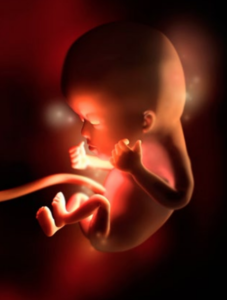
You
Week 11: Symptoms such as nausea, vomiting and tiredness will fade and disappear completely in the majority of women as this first trimester comes to a close (and usually by Week 16 at the latest). This is because the placenta has taken over the production of hormones necessary to keep the pregnancy going. You will probably have your booking visit with your midwife around this time, as well the ‘dating’ ultrasound scan.
Week 12: There is an increase in blood supply to all your major organs. As your early pregnancy symptoms lessen and you start to feel more energetic, you may want to think about your exercise regime. Exercising regularly will help you cope with the physical demands of pregnancy and birth, as well as boosting your mood with the production of endorphins. Make sure, however, that any activities you do are appropriate for pregnancy.
Week 13: As you approach the start of the second trimester, you are likely to be feeling much better than in previous weeks, to have renewed energy and appetite and to feel confident that your pregnancy is now well established.
